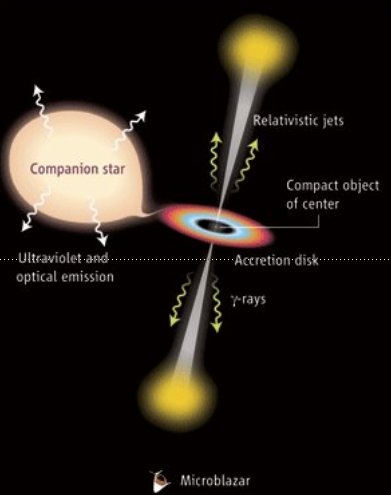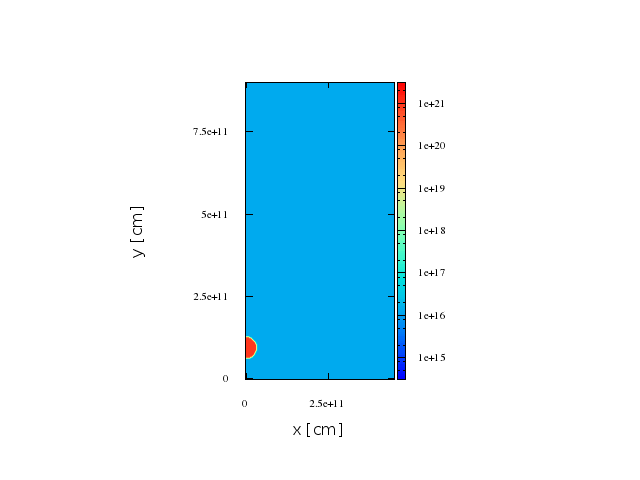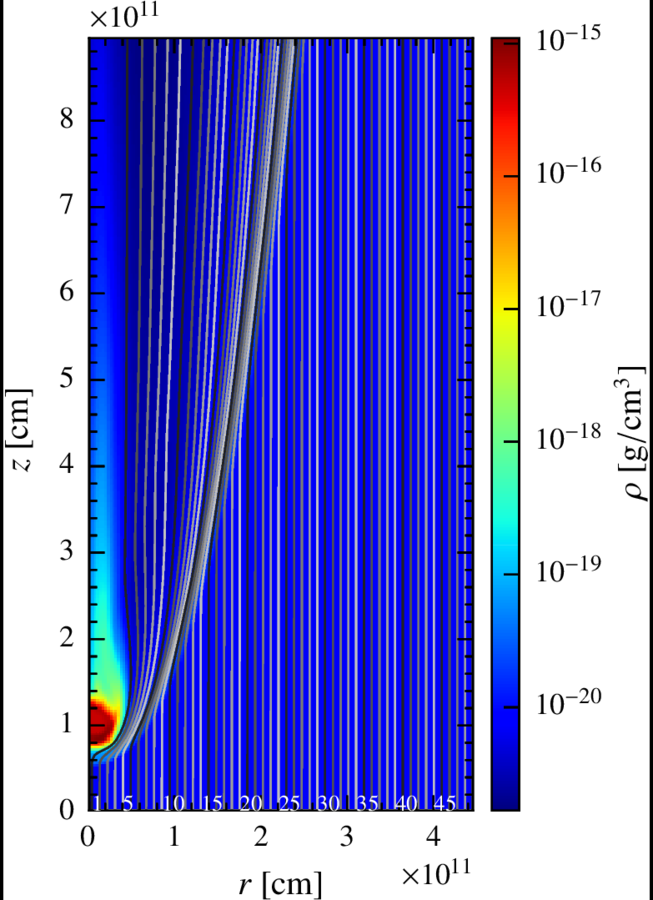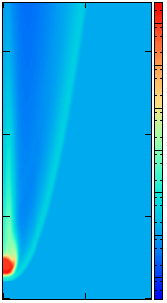Contribution due to clumpy winds to the gamma-ray emission in microquasar jets
s. del palacio, v. bosch-ramon, X. paredes-fortuny, g. e. romero,
D. khangulyan and M. ribó
Cargese, 26th May 2016

V. M. DE LA CITA
high-mass Microquasars (HMMQ)
A story of clumpy winds
Within the textbook picture of an x-ray binary, the donor star transfers matter to the compact object, forming an accretion disk around it and, in the case of microquasars, two bipolar relativistic outflows (our beloved jets).
In the specific case of a high-mass microquasar, the winds of the (massive) donor star are expected to be strongly inhomogeneous (e.g. Owocki & Cohen '06, Moffat '08), presenting overdensities (clumps) that may interact with the jet.
physical scenario
The impact of clump-like wind inhomogeneities on the jets of microquasars has been addressed in a more analytical way by Araudo et al. '09 and Perucho et al. '12 performed a detailed three-dimensional simulations.
Here we couple for the first time relativistic hydrodynamical (RHD) simulations with non-thermal radiative calculations, along with a semi-analytical description of the frequency and characteristics of this jet-clumps interactions.

Credit: F. Mirabel

Jet
direction
O-type Star
(far away)

~8.5 min
~1 min
~12 min
~10 min
~14 min
First stage
Second stage
Going into details. hydrodynamic setup.
The fluid is divided in 50 lines with 200 cells each, describing an axisymmetric 2D space of:




The clump radius, height and density contrast are:
HALF the solar radius!
A FOURTH of an Astronomical Unit!
Although the RHD simulation is 2D, we take this information and scramble the different lines around the y axis, giving each cell a random azimuthal angle phi, so the result is more similar to the 3D real scenario.
Going into details. 3d emitter.

Going into details. Physical assumptions.
Magnetic field perpendicular to the fluid line
Definition of the magnetic field at the beginning of the line:
Evolution of the B field in the different cells k:
(Low, high magnetic field)
Fraction of matter energy flux that goes to magnetic energy
Photon field:
injection of non-thermal particles
A fraction of the generated internal energy per second in the cell k enters in the form of non-thermal particles.
Going into details. some notes on the code.
We let the particles evolve until they reach a steady state so we can consider the medium stationary, in other words, every loss time (e.g. synchrotron) or cell-crossing time is much shorter than the dynamical time on large scales. Described in de la Cita et al '16.
All the computation is done in the (relativistic) frame of the fluid, so every relevant quantity has to be transformed, including the angles between fluid, gamma photons and target photons velocities.
Once we have the electron distribution, we compute the inverse Compton (IC) and synchrotron radiation, taking into account the Doppler boosting.
where
Ghisellini's talk
Going into details. Physical assumptions i.
We follow a prescription for particle acceleration in strong shocks. The acceleration timescale goes like ~1/v² as proposed in previous works (e.g. Drury 1983)
We inject non-thermal particles when a shock takes place:
Internal energy goes up
and
fluid velocity goes down
Where and how do we inject non-thermal particles

Going into details. Observer angle.
To get a feeling of the importance of the observer angle, we have chosen the most extremes angles: 0º (with the jet bulk velocity pointing at the observer), and 90º (when the observer is placed in the z axis).
The observer will be placed beyond the star forming an angle theta with the vertical axis.

Clump
Jet thrust
Results. First case, smaller shocked region
In the case of a low magnetic field, the IC radiation dominates the spectrum.
The difference between the two angles come from the doppler boosting, more important for smaller angles given that most of the cells have a strong z- component of the velocity

Results. second case, bigger shocked region

Results. comparison between the two cases.
In general the non-thermal radiation will be increased for larger shocks, produced while the clumps is being disrupted, specially when looking at the system off the head-on direction. When looking from this directions the pair-creation absorption is more important due to the geometry of the system.

Maps. 2d axisymmetric representation.
We have built maps to have a sense of where the radiation comes from. It is important to recall that this maps are a 2D representation of a 3D shock.




Maps. FIrst stage.
Inverse compton
synchrotron

The total observer luminosity in this case is:
While in the fluid frame the total luminosity is:
Maps. second stage.
Inverse compton
synchrotron
The total observer luminosity in this case is:
While in the fluid frame the total luminosity is:

Discussion. Generalization of the results.
The minimum radius for a clump to enter the jet is:
with
The maximum jet luminosity not to destroy the jet before it enters:
which in the case of Cygnus X1 this gives rise to
Knowing the lifetime of a clump inside the jet and the frequency they enter with (for a given clump size) we can compute the duty cycle: the fraction of the time that a certain type of clumps are interacting with the jet.
Discussion. Conclusions.
-
The effective radius of the emitter is much bigger than the clump radius.
-
Emission levels strongly depend on the viewer angle due to Doppler boosting.
-
Depending on the duty cycle and the mass distribution of clumps, their radiation can contribute to the standing high-energy emission and also be responsible of short GeV flares, like those observed by AGILE in Cygnus X-1 (Sabatini et al. '10).
Thank You.
"Science is a wonderful thing if one does not have to earn one's living at it."

A. Einstein
Backup slide. Fixing the line ending.
Given that the two winds can mix through the fluid lines, we have had to cut the lines at a certain point. To do so, we can impose that the amount of material that crosses the section do not get larger than a certain threshold:
Backup slide. Injected Luminosity.
The injected non-thermal particles have a lumisosity given by a fraction of the generated internal energy per second in the cell.
With the pre-factor varying between 0 and 1 and the +/- subindexes refering to the right/left boundaries, respectively.
Cargese 2016
By otnoesmusica
Cargese 2016
Contribution due to clumpy winds to the gamma-ray emission in microquasar jets
- 929



